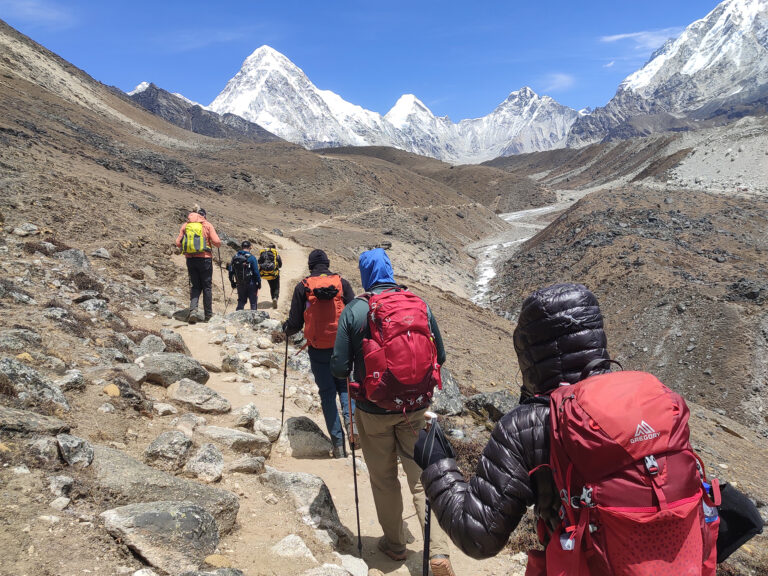The Everest High Passes Trek is a thrilling adventure that takes you through some of the most stunning landscapes in the Himalayas. To make the most of this trek, choosing the right season is crucial.
Here’s a comprehensive guide to the best times for the Everest Three Passes Trek, summarizing the key features of each season to help you plan your journey.
Spring (March to May)
Spring is a popular time for trekking in the Everest region, offering a vibrant landscape filled with blooming rhododendrons and moderate temperatures. From late March to May, daytime temperatures range from 8°C to 15°C (46°F to 59°F), while nighttime lows drop to between -10°C and -2°C (14°F to 28°F).
The trails are generally in good condition as the snow begins to melt, allowing for easier navigation. This season boasts stunning morning views of the mountains, although afternoon clouds can sometimes obscure them.
While the trails are less crowded than in autumn, spring trekkers can enjoy a lively atmosphere with colorful flora. However, trekkers should be prepared for fluctuating temperatures and potentially muddy conditions on certain sections of the trail.
Summer/Monsoon (June to August)
The summer season, coinciding with the monsoon, is typically the least favored time for trekking in the Everest region. From June to August, temperatures rise to around 12°C to 18°C (54°F to 64°F) during the day and can drop to between 0°C and 5°C (32°F to 41°F) at night.
Heavy rainfall during this period makes the trails muddy and slippery, with increased risks of landslides. While the scenery is lush and green, the frequent rain often obscures views of the majestic peaks, leading to a less enjoyable experience for many trekkers.
However, those seeking solitude will find fewer crowds on the trails, and many tea houses offer lower prices during this off-peak season. Trekkers should come prepared with waterproof gear and be cautious of trail conditions.
Autumn (September to November)
Autumn is widely regarded as the best time for the Everest Three Passes Trek. From September to November, trekkers can expect stable weather, clear skies, and ideal temperatures ranging from 10°C to 16°C (50°F to 61°F) during the day and dropping to between -5°C and -10°C (23°F to 14°F) at night.
The terrain is dry and well-maintained, allowing for smoother navigation across the high passes. This season offers breathtaking views of Everest and its neighboring peaks, making it perfect for photography.
While the trails can be busy due to high trekking traffic, the vibrant atmosphere and cultural festivals, such as Mani Rimdu, add to the experience. However, trekkers should be prepared for higher accommodation costs due to increased demand.
Winter (December to February)
Winter presents the most challenging conditions for the Everest Three Passes Trek, with freezing temperatures and heavy snowfall. Daytime temperatures hover around 0°C to 4°C (32°F to 39°F), while nighttime lows can plummet to between -12°C and -20°C (10°F to -4°F).
The breathtaking winter scenery includes crisp, clear skies and snow-covered peaks, offering stunning views for those brave enough to trek during this season. However, many tea houses may close, and the high passes can be snowed in, making navigation difficult.
While winter provides an opportunity for solitude and lower trekking costs, trekkers should be equipped for harsh weather conditions and consider hiring a guide for safety.
Conclusion
Selecting the best time for the Everest Three Passes Trek depends on your preferences for weather, crowd levels, and the overall trekking experience you seek. Spring and autumn offer the best conditions for clear views and comfortable trekking, while summer provides solitude and lush landscapes at the cost of rain and muddy trails. Winter, though challenging, offers stunning beauty and isolation for the adventurous. Whichever season you choose, prepare thoroughly to ensure an unforgettable adventure in the heart of the Himalayas.


